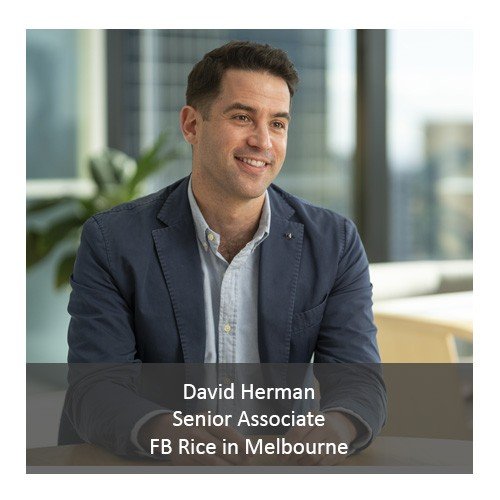New Zealand relaxes its approach to double patenting
18 May 2023


The New Zealand Patent Office (IPONZ) has recently updated its double patenting guidelines section in its Examination Manual, which is viewed as a retreat from its previous strict stance on what constitutes double patenting. Following this update, New Zealand’s provisions on double patenting will now essentially align with Australia.
As explained by David Herman, a senior associate at FB Rice in Melbourne, double patenting is the granting of two patents for a single invention to the same applicant in a single jurisdiction. For reasonable grounds, it is not allowed in New Zealand as, by granting a patent in the same invention twice, it could lead to confusion and inconvenience to the public. However, applicants can divide a new patent application out of an earlier filed patent application, making a divisional application. The earlier filed patent application, in this case, then becomes the parent application. If two or more divisional applications are divided from the same parent application, they are then known as sibling applications.
“Currently in New Zealand, applicants can also file divisional applications in a serial manner. This is the subsequent filing of divisional applications from an earlier divisional application, provided certain time restrictions are met. This can give rise to grandparent applications, child applications, even grandchild applications and so on,” he said. “However, it is often easier to refer to these applications as divisional applications, whereas the first filed patent application is referred to as the originating parent application.”
According to Herman, a divisional application must not be accepted, which includes “claims for substantially the same matter as accepted in the parent application and vice versa in the case of a parent application where a divisional application has been accepted first.”
Before this update, IPONZ had a strict interpretation around double patenting that essentially required no overlap in scope between the claims of the divisional and its parent, said Herman. This arose from IPONZ’s interpretation of the term ‘substantially the same matter’ meaning no overlap between claims of a parent application and its divisional application could exist. As such, double patenting objections were routinely raised “if a claim in the divisional application fell wholly within the scope of, or is substantially identical to, a claim accepted in the parent application.”
As double patenting objection could not be cured by surrendering or amending the earlier accepted parent application, applicants used to have limited options to remedy this situation. Hence, these restrictions required a unique best practice approach for prosecution in New Zealand.
“Claims of the broadest commercially relevant scope had to be pursued early in the examination process and, if necessary, through to an examination hearing,” said Herman. “In addition, all commercially relevant embodiments had to be pursued as dependent claims in the parent application. Alternatively, applicants needed to ensure that the various alternative commercially relevant embodiments were each able to be carved into separate divisional applications without introducing overlapping claims between the applications.”
With the recent update, which was implemented since March 1, 2023, IPONZ has now relaxed its assessment of what constitutes double patenting and the options available to applicants to remedy the situation. Substantially non-identical claims, including overlapping and wholly encompassed claims between parent and divisional applications, will now be allowed and not trigger a double patenting objection, said Herman.
Also, by amending the claims of either the parent or divisional application, or by surrendering the earlier accepted application or patent granted thereon, applicants can overcome the double patenting objection. As such, they can withdraw an accepted or granted parent with narrower claims to pursue a divisional with broader claims.
To determine whether the claims of the parent and divisional applications are substantially the same scope, a “double infringement” test is applied. According to Herman, the double infringement test asks two questions:
- Would an infringement of the claim(s) of the first application also be an infringement of the claim(s) of the second?
- Would an infringement of the claim(s) of the second application also be an infringement of the claim(s) of the first?
If the answer is “yes” to both questions, the claims are considered identical and double patenting exists. If there are infringing embodiments within the scope of a claim, which are not within the scope of the other claim, this will not meet both arms of the double infringement test. Essentially, if the claims of a divisional application are different in scope to those of the parent application (i.e., non-identical) then a double patenting objection will not be raised.
“Until now, New Zealand’s strict stance on double patenting often had the detrimental result that an applicant did not receive patent protection for certain alternative embodiments of their invention, despite the fact they had genuinely sought protection for and had committed to publishing through the patent system,” said Herman.
By aligning with Australia, applicants can now file divisional applications to commercially relevant embodiments not directly claimed in an earlier parent application without falling foul of a double patenting objection. Applicants can now also elect to pursue narrower claims in a parent application and go after broader or overlapping claims in a divisional application.
Herman reminded applicants to take note of several points when filing divisional applications in New Zealand. All divisional applications in New Zealand must be filed and have examination requested within five years from the complete filing date (i.e., international PCT filing date for national phase applications) of the originating parent application.
Divisional applications may also result in self-collision called poisonous priority with its parent application, where claims of the parent and/or divisional contain added subject matter not present in the original priority or provisional filing. Therefore, any added subject matter should be quarantined in separate claims for both parent and divisional applications.
“Finally, the New Zealand Government has proposed substantial changes to its divisional patent practice. If implemented, as currently drafted, the time for filing any divisional applications will be significantly tightened to require that all divisional applications must be filed together with a request for examination prior to the original parent application being accepted, voided or abandoned,” said Herman.
The proposed changes also attempt to address the poisonous priority issue by introducing an anti-collision provision, clarifying that a divisional patent application cannot be refused based on what is disclosed in the parent patent application or vice-versa.
Herman also said that the proposed changes are not due for public consultation until mid to late 2024 if not 2025.
- Ivy Choi






